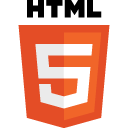Open Web Platform
The Open Web Platform
The Open Web Platform is the collection of open (royalty-free) technologies which enables the Web. Using the Open Web Platform, everyone has the right to implement a software component of the Web without requiring any approvals or waiving license fees.
This goal of this repository is to document the Open Web Platform and provide links to various helpful resources. It is intended for a general audience. If you're interested in editing these pages, please see the Community portal.
Note: There is a separate dedicated wiki for the HTML Working Group. It is intended for discussion specific to ongoing work and issues within the HTML Working Group. The main page of this wiki is really the W3C HTML page, so start there.
The W3C is working because of the contributions of each individual (from companies, organizations, or just people with passion for the Web). The Web exists because of you. The platform is defined by a list of browser technologies being currently developed, implemented and tested.
HTML

The HyperText Markup Language (HTML) is the publishing language of the World Wide Web. The first version of HTML was described by Tim Berners-Lee in late 1991. The current W3C Recommendation for HTML is HTML5.
HTML has been traditionally served with text/html mime type. When developing XHTML 1.0, XHTML 1.1, a transition to application/xhtml+xml. A minority of document less than 0.003% are being served with this latter mime type.
See also specifications.
HTML Educational material
You can start studying the HTML on the HTML Educational material for beginners. You can look at the Basics of HTML article. You might want also check the Web Standards Curriculum
HTML Elements
You can help documenting the list of HTML and related elements.
HTML Work History
HTML development has been hosted by a few organizations along its history including CERN, IETF, W3C, … The development has been mainly taken place on mailing-lists.
DOM
The Document Object Model is a cross-platform way for representing and interacting with documents (specifically HTML). It is the main way for javaScript scripts to interact and modify a Web page dynamically. The lastest version of Javascript is built upon ECMA-262 Edition 5.1.
CSS
CSS is a Style Sheet Language for formatting the document content (written in HTML or other markup language). You might be interested by the CSS Working Group wiki too.
CSS Educational material
You can start studying the CSS on the CSS Educational material for beginners. See also the CSS basics article.
CSS Properties
You can help documenting the list of CSS properties.
SVG
SVG is a markup language for describing two-dimensional graphics applications and images, and a set of related graphics script interfaces.
- Basic SVG 101
- What are the tools for using SVG
- Lists for the SVG elements
MathML
MathML is an XML application for describing mathematical notation and capturing both its structure and content. The goal of MathML is to enable mathematics to be served, received, and processed on the World Wide Web, just as HTML has enabled this functionality for text.
- Basic MathML 101
- What are the tools for using MathML
- List for the MathML elements
Web APIs
- HTML Canvas 2D Context, WebGL
- Audio
- Indexed Database, Web Storage
- File, File System, File Writer
- History, contentEditable, Drag and Drop, HTML Editing Commands
- Web Sockets
- Web Workers
- Server-Sent Events
- XMLHttpRequest
- Geolocation, Device Orientation
- DOM Events, Touch Events, Progress Events
- Clipboard and events
- Web Notifications, Web Messaging
- Offine Web Applications
- Media Capture API
- Timing control for script-based animations, Page Visibility, Navigation Timing, Resource Timing
- Selectors
- DOM Traversal, DOM XPath, Element Traversal
EcmaScript / JavaScript
EcmaScript defines the normative specification for the Javascript language.
HTTP
HTTP is the protocol enabling the exchange of messages between Web servers and clients.
URI
URI is the formalism for defining identifiers on the Web.
Media Accessibility Checklist
We are currently asking for review comments on the Media Accessibility Checklist